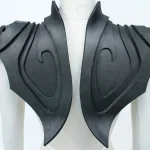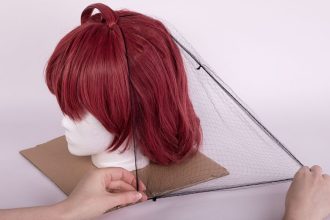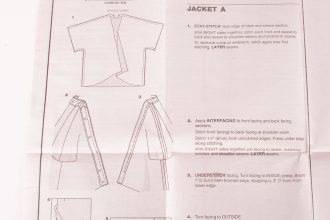Intro: Addressing the Common Concern About Cosplay Costs
One of the most common concerns we hear from newcomers to cosplay is the perceived expense of the hobby. It’s true that elaborate costumes with custom armor, electronics, and professional-quality materials can cost hundreds or even thousands of dollars. However, the reality is that cosplay can be as affordable or expensive as you choose to make it, and creativity often matters more than cost when it comes to creating impressive costumes.
Many of the most memorable and well-received cosplays in our community have been created on modest budgets by cosplayers who focused on clever solutions and resourceful techniques rather than expensive materials. With the right approach and mindset, you can create costumes that are both budget-friendly and impressive, proving that ingenuity and skill matter more than a hefty price tag.
Tip 1: Thrift & Modify
One of the most effective ways to save money on cosplay is to start with existing garments from thrift stores, discount retailers, or even your own closet rather than purchasing new materials for every project. This approach can save you significant amounts of money while providing a solid foundation that requires only modification to match your character.
Finding the Right Base Garments
The key to successful thrift store cosplay is learning to see potential rather than focusing on current condition or style. Look for garments in solid colors that can be easily dyed or painted, items with interesting textures that match character elements, and pieces with unique cuts that can be modified into character-specific shapes.
Effective thrift shopping strategies include:
- Visit stores regularly, as inventory changes frequently
- Shop during sale days for maximum savings
- Look for items in larger sizes that can be taken in
- Check children’s sections for unique shapes and colors
- Focus on construction quality over current style
Pro Tip:
Keep a cosplay idea file with reference images and visit thrift stores regularly with specific character elements in mind. You’ll be surprised how often you’ll find exactly what you need for an upcoming project. Many community members have found entire costume bases for under $20 by shopping strategically.
Modification Techniques for Maximum Impact
Once you’ve found a suitable base garment, modification techniques can transform it into something that closely matches your character design. Basic sewing skills, fabric paint, and simple crafting supplies can create dramatic changes that make thrifted items look custom-made.
Essential modification techniques include:
- Dyeing to match character color schemes
- Adding trim, patches, or appliques
- Taking in or letting out seams for better fit
- Adding structure with interfacing or craft foam
- Creating new necklines or sleeve styles
For example, a simple black dress from a thrift store can become a elegant character gown with the addition of fabric paint for patterns, ribbon trim for detailing, and craft foam for structured elements like collars or shoulder pieces. The base garment might cost $8, while the modifications add only $15-20 in materials.
Tip 2: Resourceful Crafting
Some of the most impressive cosplay elements have been created using unconventional materials that cost pennies compared to traditional cosplay supplies. Thinking outside the box about materials can lead to unique effects and significant cost savings while developing your problem-solving skills as a creator.
Unconventional Materials for Common Cosplay Elements
Many cosplay components that seem to require expensive specialized materials can actually be created using everyday items found around the house or purchased cheaply at dollar stores. The key is understanding the properties of different materials and how they can be adapted to cosplay needs.
Creative material substitutions include:
- Plastic bottles for armor or helmet components
- Yoga mats or pool noodles for padding and armor
- Cardboard for structural elements and bases
- Aluminum foil for metallic effects and details
- Pantyhose for skin-tight costume elements
These materials often require more creativity in construction and finishing, but they can produce surprisingly professional results when properly executed. For example, plastic bottles can be heated and shaped into armor pieces that are virtually indistinguishable from more expensive materials when painted and weathered effectively.
Upcycling and Repurposing Existing Projects
Rather than starting each project from scratch, consider how elements from previous cosplays can be repurposed or modified for new characters. This approach not only saves money but also reduces waste and allows you to build on skills and techniques you’ve already mastered.
Examples of repurposing include:
- Reusing armor pieces with new paint schemes
- Modifying wigs for different characters
- Adapting prop bases for new weapons or accessories
- Reusing electronic components in new builds
- Converting generic clothing into character-specific pieces
Pro Tip:
Keep a “cosplay parts bin” with materials and components that might be useful for future projects. This collection becomes more valuable over time as you accumulate versatile elements that can be adapted to multiple characters. Many experienced cosplayers maintain extensive collections of reusable components that save them hundreds of dollars annually.
Tip 3: Plan & Budget
Just like any other project, cosplay benefits greatly from careful planning and budgeting. Taking time to map out your project costs and timeline before beginning work can prevent expensive mistakes and help you make informed decisions about where to invest in quality materials versus where to save money.
Creating a Project Budget Spreadsheet
A simple spreadsheet can help you track all cosplay-related expenses and stay within your financial limits. Breaking down costs by category makes it easier to identify where you can save money and ensures that you don’t overlook essential items in your planning.
Essential budget categories include:
- Materials (fabric, foam, paint, adhesives)
- Tools (if not already owned)
- Wig and accessories
- Shoes and undergarments
- Contingency fund (10-20% of total budget)
Tracking your actual spending against your budget helps you learn which aspects of cosplay are most expensive for your skill level and preferred techniques. This information is invaluable for planning future projects and identifying opportunities to save money.
Strategic Investment Decisions
Not every aspect of a cosplay requires premium materials or tools, and learning to distinguish between essential and optional expenses is a valuable skill. Strategic investment means spending more on elements that significantly impact the final result while saving money on components that won’t be noticed.
Investment priority guidelines:
- High visibility: Invest in elements that viewers see first
- Functional requirements: Spend more on comfort and safety
- Skill demonstration: Invest in areas that showcase your abilities
- Reusability: Spend more on versatile components
- Convention requirements: Budget for durability and wear
For example, if you’re creating a character with an elaborate headdress but simple clothing, invest more in the headdress materials and construction while using more budget-friendly options for the garments. This approach maximizes visual impact while staying within budget constraints.
Tip 4: Skill Swapping
One of the greatest advantages of being part of a cosplay community is the opportunity to collaborate and share skills with other members. Skill swapping allows you to access expertise and completed elements that you might not be able to create yourself, while offering your own skills in exchange to keep costs down for everyone involved.
Identifying and Offering Your Skills
Every cosplayer has unique talents and skills that can be valuable to others, even if they’re not the areas where you personally need assistance. Taking inventory of your abilities and offering them to community members creates opportunities for mutually beneficial collaborations.
Common cosplay skills for swapping include:
- Sewing and garment construction
- Prop and armor making
- Wig styling and cutting
- Makeup and special effects
- Photography and editing
Even if you’re relatively new to cosplay, you likely have skills from other hobbies or professional experiences that can benefit fellow cosplayers. Computer skills, crafting abilities, organizational talents, or simply having a good eye for detail can all be valuable in collaborative projects.
Successful Collaboration Structures
Effective skill swapping requires clear communication about expectations, timelines, and contributions from all parties. Establishing ground rules and agreements upfront helps prevent misunderstandings and ensures that everyone benefits from the collaboration.
Key collaboration elements include:
- Clear project scope and individual responsibilities
- Realistic timelines and milestone checkpoints
- Agreed-upon cost-sharing arrangements
- Quality standards and revision policies
- Backup plans for unexpected circumstances
Pro Tip:
Consider organizing community skill swap events where members can meet, discuss their abilities, and form collaboration partnerships. These events often lead to long-term creative relationships that benefit everyone involved. Our community has a dedicated skill swap forum where members post their offerings and requests.
Tip 5: Wait for Sales
Timing your cosplay purchases to coincide with sales and seasonal discounts can result in significant savings without compromising on quality or selection. Understanding retail patterns and planning your projects around sale cycles is a simple but effective way to stretch your cosplay budget further.
Optimal Timing for Different Materials
Different cosplay materials and supplies go on sale at different times of year, and knowing these patterns can help you plan purchases to maximize savings. Many retailers plan their sales cycles months in advance, making it possible to time major purchases for maximum value.
Seasonal sale timing includes:
- Fabric: End of season (fall/winter) for next year’s colors
- Craft supplies: Back-to-school season (late summer)
- Electronics: Black Friday and post-holiday sales
- Wigs: Convention season for cosplay-focused retailers
- Tools: New year clearance and back-to-school promotions
Signing up for retailer newsletters and following suppliers on social media can provide advance notice of upcoming sales. Many craft stores also have apps that send notifications about weekly specials and exclusive member discounts.
Building a Wishlist and Shopping Strategically
Maintaining a wishlist of cosplay supplies you’ll need in the future allows you to take advantage of unexpected sales and clearance opportunities. This approach prevents impulse purchases while ensuring you’re ready to buy when prices drop on items you actually need.
Wishlist management strategies:
- Categorize items by priority and project timeline
- Research typical price ranges to identify good deals
- Set price alerts for online retailers
- Compare prices across multiple retailers
- Consider quality versus cost trade-offs for each item
For example, if you know you’ll need a specific type of foam for an upcoming armor project, research the typical price range and set a price alert. When a sale brings the price below your threshold, you can purchase with confidence that you’re getting good value. This approach often results in savings of 20-50% compared to buying at regular prices.
Conclusion: Creativity Over Cost
The most important lesson about cosplay on a budget is that creativity, skill, and attention to detail matter far more than expensive materials when it comes to creating impressive costumes. Some of the most celebrated cosplays in our community have been created with minimal budgets but maximum ingenuity, proving that resourceful cosplayers can achieve stunning results without breaking the bank.
These five tips provide a framework for budget-conscious cosplay that doesn’t compromise on quality or creativity. By combining strategic shopping, resourceful crafting, community collaboration, and careful planning, you can create costumes that rival those made with premium materials while staying within your financial limits.
Remember that cosplay is ultimately about expressing your creativity and having fun with your favorite characters – the costume is just the vehicle for that expression. Focus on the joy of creation and the satisfaction of problem-solving rather than on achieving perfection through expensive materials. Your enthusiasm and skill will shine through regardless of your budget.
For additional budget cosplay inspiration, check out our community’s “Cosplay on a Dime” photo gallery, which showcases impressive costumes created for under $50. These examples demonstrate the incredible possibilities that exist when creativity meets resourcefulness, and they provide practical ideas you can adapt for your own projects.
As you implement these budget-saving strategies, remember to share your successes and discoveries with fellow community members. Your tips and techniques for affordable cosplay can help others enjoy the hobby without financial stress, contributing to the supportive and inclusive atmosphere that makes our community special.









